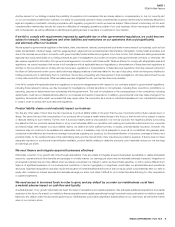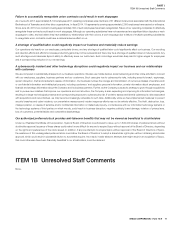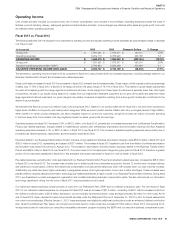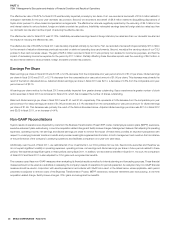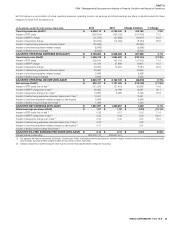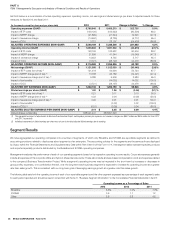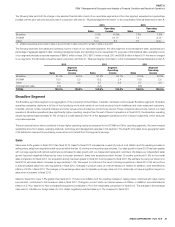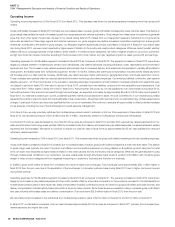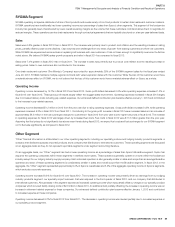Sysco 2013 Annual Report Download - page 30
Download and view the complete annual report
Please find page 30 of the 2013 Sysco annual report below. You can navigate through the pages in the report by either clicking on the pages listed below, or by using the keyword search tool below to find specific information within the annual report.SYSCO CORPORATION-Form10-K 19
PARTII
ITEM7Management’s Discussion and Analysis ofFinancial Condition and Results of Operations
Business Transformation Project
Our multi-year Business Transformation Project consists of:
•
the design and deployment of an ERP system to implement an integrated software system to support a majority of our business processes and further
streamline our operations;
•a cost transformation initiative to lower our cost structure;
•
a product cost reduction and category management initiative to use market data and customer insights to make changes to product pricing and
product assortment; and
•several other initiatives.
We deployed our ERP system to three additional locations in scal 2013 and experienced improved functionality in many areas compared to past deployments.
Our shared services center, Sysco Business Services, continues to expand and provide a broader array of centralized administrative services. The majority
of the system functionality is performing as designed; however, we have identi ed areas for improvement to certain components of the system that we want
to address before we continue deploying to additional locations. These improvements include simplifying certain processes to improve response times and
reduce system loads. We believe that this will improve system stability and result in improved ability to scale the system as we move forward. While these
improvements are being made, we will continue implementing individual modules such as our human resource module and continue with other Business
Transformation initiatives. We intend to deploy the system to one additional location around the end of this calendar year. If our updates are successful, we
anticipate that further deployment will resume early in calendar 2014. Our deployment schedule will be further de ned at that time.
Our cost transformation initiative seeks to lower our cost structure by $300million to $350million annually by scal 2015. These include initiatives to increase
our productivity in the warehouse and delivery activities including eet management and maintenance activities. It also involves improving sales productivity
and reducing general and administrative expenses, partially through aligning compensation and bene t plans. Efforts from our cost transformation initiatives
in scal 2013 spanned many areas of operations. We completed the implementation of maintenance management tools in our UnitedStates Broadline (U.S.
Broadline) companies. A customer relationship management tool has been implemented in our U.S. Broadline companies that will improve sales productivity.
We restructured our information technology department and contracted with a third party provider for information technology managed services. For our
U.S. Broadline companies, we accelerated the implementation of our human resource module from our ERP system which is expected to be complete by
the third quarter of scal 2014. Also, in our U.S. Broadline companies we began centralizing eld nance work to our shared services center. We believe
this transition will be complete by December2013. We have begun implementing enhancements to our routing technology and processes to improve
delivery ef ciencies and expect this initiative to be complete by scal 2015. Lastly, our retirement programs have been restructured, which we believe will
result in reduced volatility of retirement-related expenses and a reduction in total retirement-related expenses in the long-term.
Ourproduct cost reductionand category management initiative is designed to lower our total product costs by $250million to $300million annually by
scal 2015 and to align our product assortment with current customer demand. We are using market data and customer insights to make changes to our
product assortment while building strategic partnerships with our suppliers. We believe there are opportunities to more effectively provide the products that
our customers want, commit to greater volumes with our suppliers and create mutual bene ts for all parties. We believe that procuring greater quantities
with select vendors will result in reduced prices for our product purchases. In scal 2013, our product cost reduction and category management initiative
was active in reducing SKUs in our inventory and increasing participation in our centralized purchasing initiative. We are in the process of piloting four
product categories in our category management initiative and have received encouraging acceptance rates from our customers of our new assortment
of products. Our suppliers have engaged in the process and appreciate building strategic partnerships that include customer insights into current trends
and product innovations.
Expenses related to the Business Transformation Project were $330.5million in scal 2013 or $0.36 per share, $193.1million in scal 2012 or $0.21
per share and $102.6million in scal 2011 or $0.11 per share. The increase in costs in 2013 was largely attributable to deployment costs and software
amortization, which began in August2012. Software amortization totaled $76.8million in 2013. The increase in costs in 2012 was due to increased project
spending, reduced capitalization of expendituresand expenses due to the ramp up of our shared services center. We anticipate that project expenses for
scal 2014 will be similar to scal 2013. Despite the increase in expense, our cash outlayfor our Business Transformation Project, which excludes non-
cash software amortization, decreased approximately $48million as compared to scal 2012.
Our goal for our Business Transformation Project is to generate approximately $550million to $650million in annual bene ts to be achieved by scal 2015.
In scal 2013, we believe we exceeded our goal of realizing approximately 25% of the total bene t. In scal 2014, we believe we can obtain approximately
50% to 70% of the total targeted bene t. If we are successful in obtaining these bene ts in scal 2014, some of the trends in gross pro ts and operating
expenses noted above could be favorably impacted.
Our original goal was to grow our diluted earnings per share to $2.50 to $2.75 by scal 2015. Despite the success of our Business Transformation Project,
our diluted earnings per share has not grown as originally anticipated due to the dif cult economic environment and the general operating performance of
our underlying business that did not meet our expectations. We no longer believe we will achieve our original goal of producing diluted earnings per share
to $2.50 to $2.75 by scal 2015.


